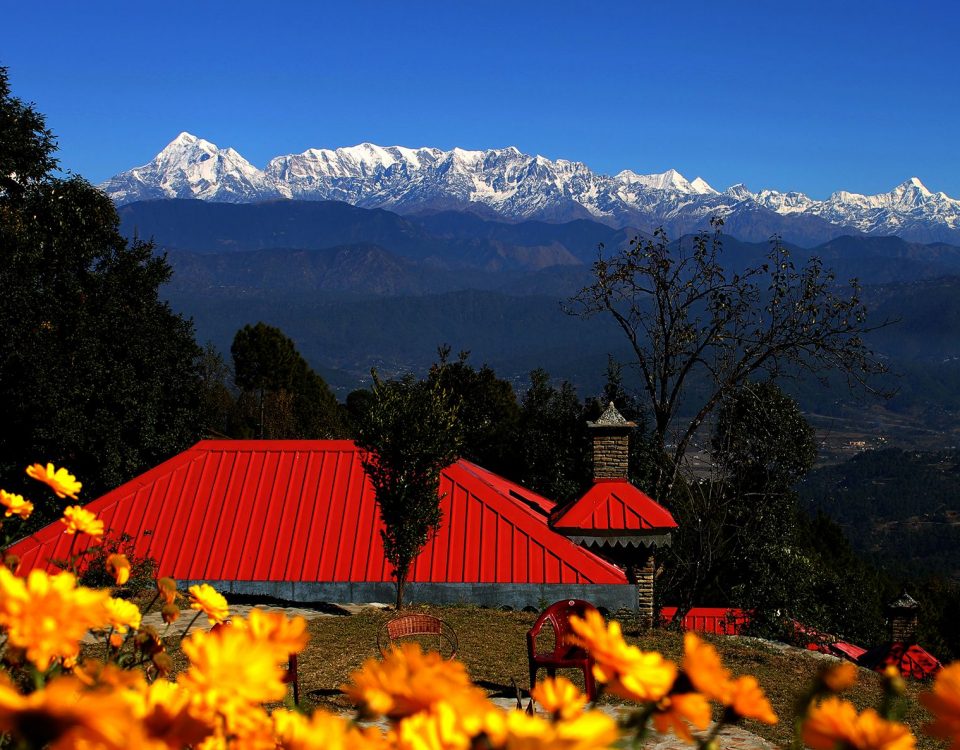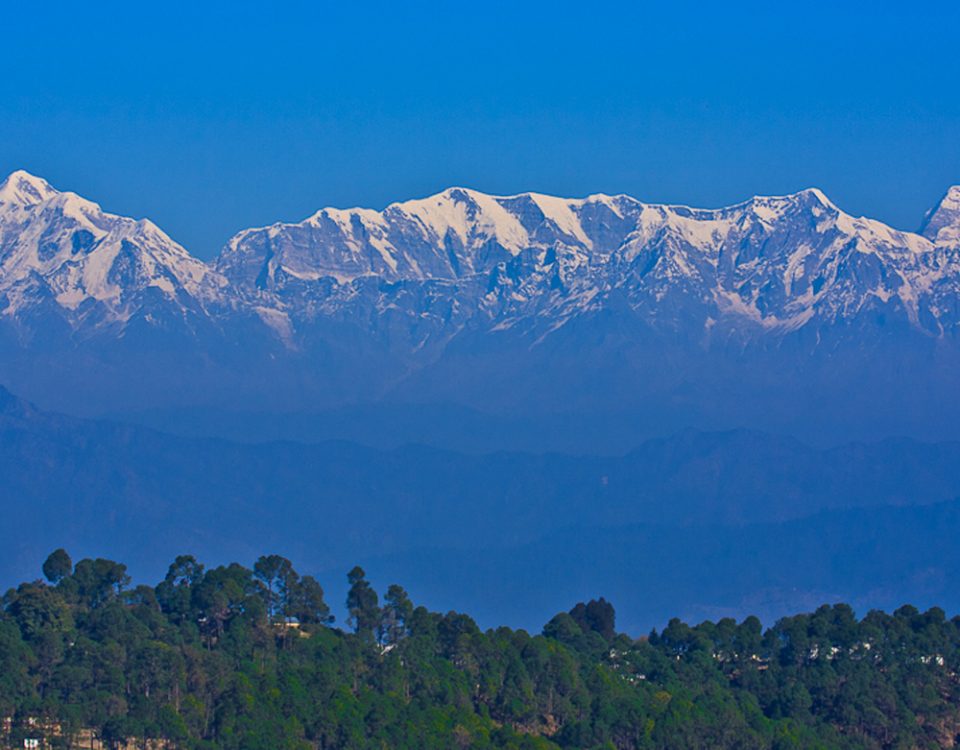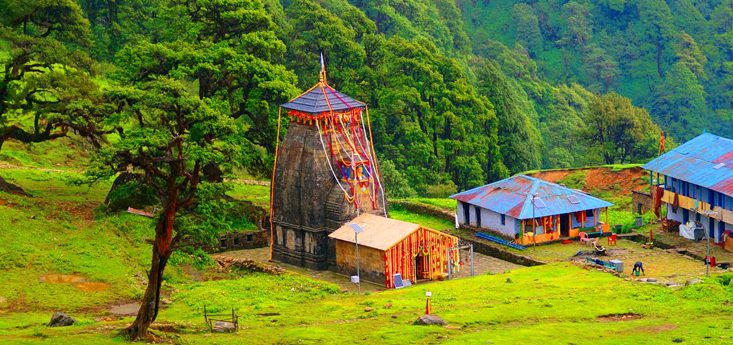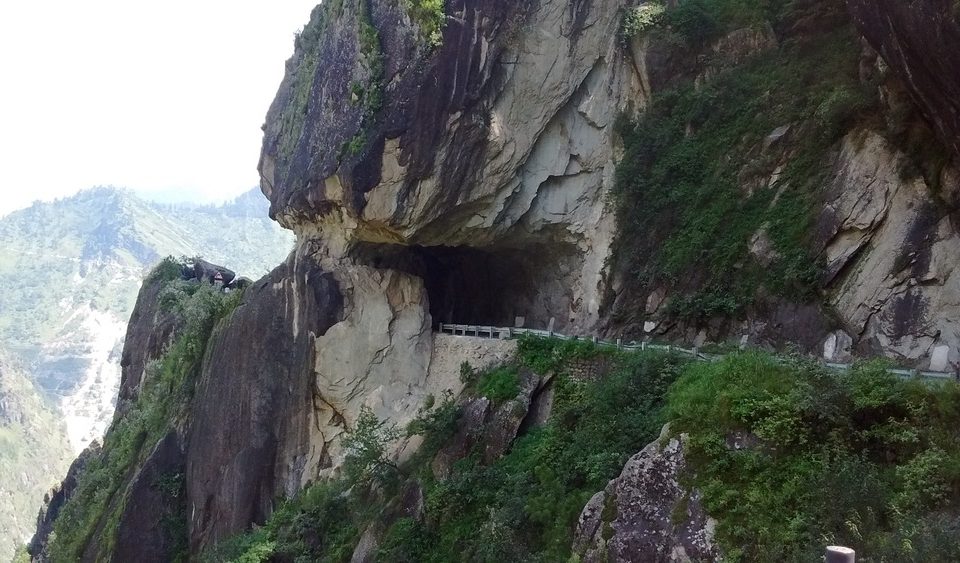Places to Visit in India
Do you get the feeling of just getting lost in the wildness? Have you ever wanted to experience, what it feels like to forget all your worries and gaze at the wondrous snowy peaks of the Himalayas?
Well, all these absolutely sound something that one would have on their bucket list. Yet, many people are unable to find the perfect place to live out these fantasies.
I too have these magical dreams and was searching for a place that would help me manifest these dreams into reality. After thorough research, I came across a mystical town cuddled in the midst of the hills- Kausani.
The rustic charm of the town and the majestic views of the city is what drives people to head off to this lovely unexplored town of Kausani.
Many, including the great Mahatma Gandhi, had christened this place as “Switzerland of India”, and it is rightly so, if not more gorgeous.
The Journey
My journey started from the crowded cities of Delhi, as my car slowly took a turn towards more greener and cleaner pastures. The town is a little over 400 km from Delhi. The whole journey itself is gorgeous, as we passed through winding roads, the resplendent Kosi River and smaller green towns. The journey itself filled me with so much joy and happiness, that I couldn’t wait to reach this magical town. These are the kinds of journies that serve as an inspiration to the poets.
‘Switzerland of India’
When I finally reached this quaint town of Kausani, the perfect thing I noticed was the lack of dirt and pollution. It was still untouched by the corrupt hands of humans and industries. The trees were still green as they danced with the wind, and the sky was still blue without any interference from the thick smoke of pollution. There were no cars, no honking, no noise- everything was peaceful and serene. The winds carry the aroma of the pine trees, which instantly filled up my nose, as I got down the car.
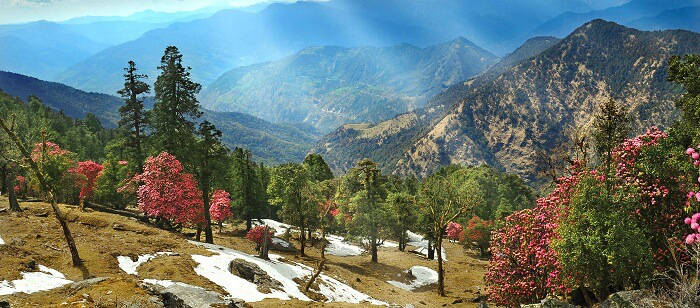
Kausani is unlike the other hill stations in North India. Here, the usual mark of the colonisers- Old Churches, big summer bungalows- all of them were missing. The only man-made a monument that one can find here is the Anasakti Ashram, where Gandhi had spent about two weeks. All of the other beauties are made by nature, which makes it even more exciting and magnificent.
In And Around
I, like any other tourist, visited Kausani, purely to release all the built-up stress from our lives back home. That being said, there are many ways to truly get lost in the beauty of this town. My visit to Kausani started off by enjoying a delicious glass of chai, as I gazed at the sun rays that fell on the white peaks of the Himalayas. One can easily get lost if such a sight starts unfolding in front of your eyes.
I started exploring this lovely town after a delicious and hot breakfast the next day. My first stop was the famous Anasakti Ashram.
The Ashram itself as a lot of different stories and anecdotes about the short time that Gandhi lived here. It gives insight into the life of our Father Of The Nation in a different way. I had a really peaceful and calming experience when I walked into the ashram. It almost felt as if I knew the Great Mahatma Gandhi a little better now.
I had decided to finish most of my sightseeing on this day so that I could relax and stare aimlessly at the beauty of nature for the next few days.
My next destination was the Baijnath Temple, Bageshwar.
Baijnath Temple
The temples are not perfect. Unlike the other temples of India which are the towering examples of perfect architecture, Bajinath is not like that. It has several imperfections, yet it is these imperfections that makes this temple was wonderful and mysterious.
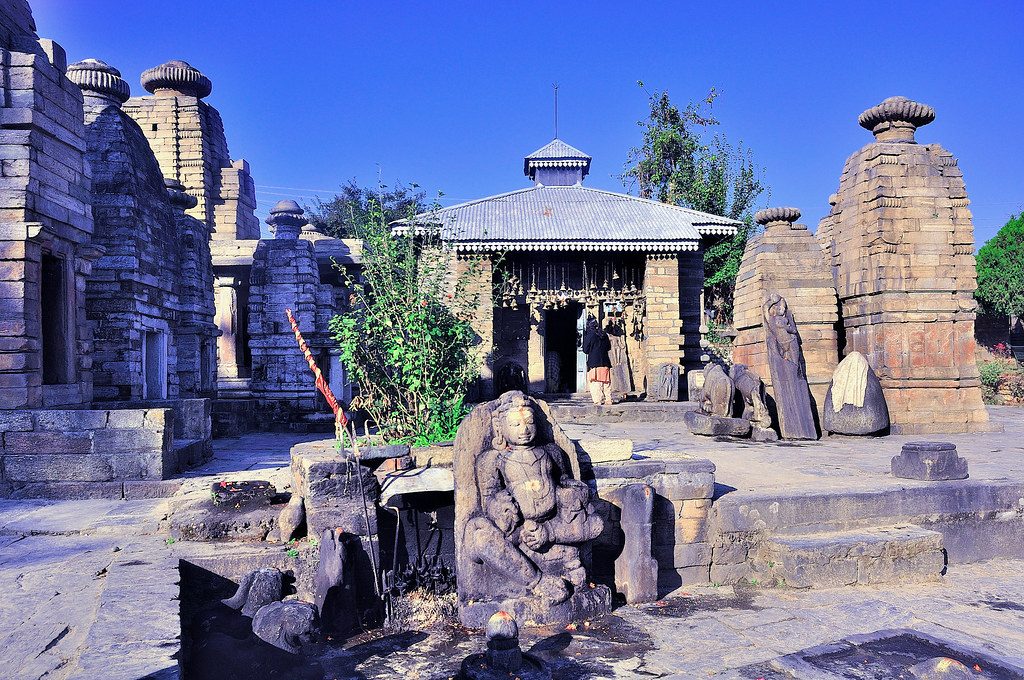
This temple is situated by the scenic river Gomti and is said to be built about 1000 of years ago. It is a very popular pilgrimage spot and is wholly devoted to Lord Shiva. The temple is built beautifully. According to popular Hindu Legend, it is said that these stone temples were built overnight by the Katyuri Kings, who were the rulers of this town between the 7th and 11th centuries. What really intrigued me, where the imperfections of the temple. The temple’s architecture wasn’t flawless, and there was a divine beauty in these flaws. It was as if the imperfections are what heightened the beauty of the temple even more.
After seeking my blessings in the Baijnath Temple, I made my way to relish the Rudradhari Falls and Caves. While this place is not within the town of Kausani, but it is pretty close to it, and I didn’t want to miss it. This place is a confluence of natural beauty and Hindu mythology. There are many legends that revolve around this place.
When I reached there, I was instantly captivated by the falls that came gushing down through the rocky hills.
The caves that adorn the place, provide a much needed mystical element to the place. The whole area is a gift from nature, which just keeps giving and giving.
Farming in Kausani
What really got my senses tingling in Kausani, was the bounty of nature that surrounded me. Everywhere I looked there was some kind of farming activity going on, which made the place even more charming.
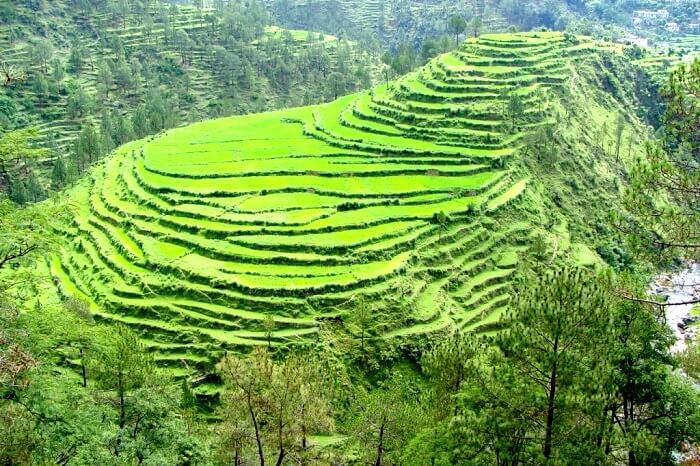
Kausani is extremely famous for its Tea Estates, and its spread out over 200 hectares. The whole area stretches out like a carpet over the hills. The moment I entered the estate, I was overwhelmed by the fragrance of the tea leaves. I was instantly awakened and energised. I could see the sun rolling down, as the entire estate filled with glowing orange light. The birds started to flock and fly home, and I just stood there marvelling at the sheer beauty of this town.
The Natural Marvel
Next morning, I woke up with the sun slowly touching my cheeks and waking me up from a deep slumber that I had fallen into. I peaked out of my giant glass windows and saw the majestic Himalayas staring right back at me, only to disappear behind the white fluffy clouds.
For the next few days, I dedicated my time to nature. I was after all in the laps of nature, and I intended to completely experience and feel it.
The sky under which Kausani resides is as heavenly as the town. While it may be unbelievable, but the sky changes colour almost once every hour. I tried to capture all the hues and shades of the sky, but even my brilliant camera wasn’t enough to capture the real beauty of the sky. It almost became a game for me, as I tried to capture as many of the shades and colours that I could, but the feeling of watching it live was monumental for me.
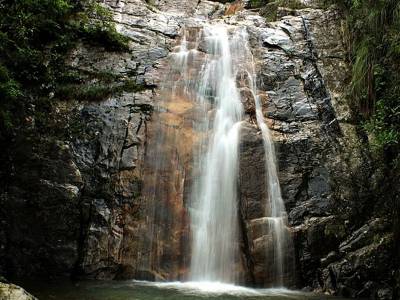
Kausani also offered me the opportunity to keep my pesky phone away, so that I could truly enjoy the gift that nature was offering me. I just switched off and unwinded, from the rest of the world, as there is hardly any phone signal in this place. This is one of the greatest gifts that Kausani offers- a time to truly disconnect and live.
While I was in Kausani, I indulged in a lot of nature trails, which left me so satisfied. There are so many pathways that lead you right into the heart of dense forests and enchanting streams, that you will be spoilt for choice. With no skyscrapers in sight, I ventured into the deep unknown and found myself walking through some pine forests, dancing with the birds and capturing every colourful flower that captivated me. I was truly in bliss. I even trekked to the famous Rudrahari temple, which is said to be a very holy and magical temple.
Another activity I really engaged myself in was speaking and socialising with the locals. The locals are so warm here, and almost everyone wants to talk over a cup of chai. Nothing beats the feeling of talking endlessly with a local about everything while sipping chai with the marvellous Nanda Devi in the background.
Food
After striking some great conversations with the locals, I also had the pleasure of trying out some of the local cuisines. The local cuisine is filled with their locally produced millets- jowar, fresh kills and ragi. I was even presented with chilli, which almost ended up burning my mouth.
Everything about this town is idyllic and calm. It far from the hipster cafes, the commercialised ropeways or the crowded viewpoints. Everyone here runs at a slow pace, you will not even realise when the morning turns into night. The locals are never in a rush, and they will always stand and talk to you. This place is far away from the modern civilisation that we dwell in. It is a break from the concrete jungles, as it shows you how God had intended earth to be like.

